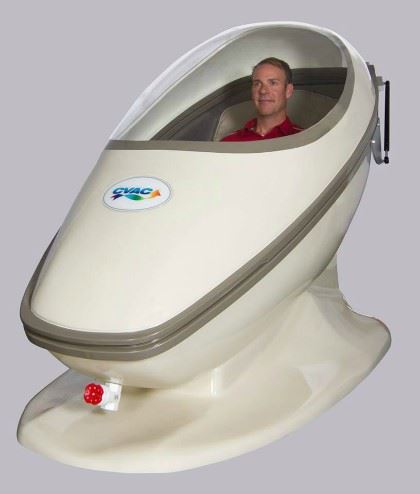
Cyclical Variation in Adaptive Conditioning
Cyclical Variation in Adaptive Conditioning (CVAC) is a technology developed to treat a variety of conditions. The CVAC unit resides in the Performance Area of our Center for Sports Neurology and Pain Medicine and has a familiar “pod-like” appearance. While it is officially designated and categorized as “exercise equipment” (the rapid changes in atmospheric pressure results in adaptations similar to training at altitude), studies have demonstrated the ability for CVAC to reduce tissue edema, and help with chronic pain in addition to improving cardiovascular conditioning. CVAC can assist with maintaining fitness in athletes who have been “sidelined” by injury and are unable to participate in normal training activities. It can also assist with improving conditioning in individuals with chronic conditions that prevent typical or traditional training. If an individual is cleared to fly in an airplane, they are cleared to tolerate CVAC. We are studying CVAC’s potential to help with concussion recovery, sleep disorders, and other chronic neurological dysfunction and impairment.
How CVAC Works
CVAC participants sit in the pod for a “flight” (training session) of a pre-designated length and undergo repeated cycles of hypoxia (lower oxygen and air pressure similar to if you are climbing in altitude on a plane) followed by normoxia (normal oxygen levels and air pressure). The flights are generally very well tolerated, although individuals may feel their ears pop (similar to what one experiences when flying.) Many world class athletes have included sessions in this CVAC pod as part of their training regimen.

-
Latest Health InsightsLearn and explore our blogs and updates about sports neurology and pain medicine. Education is power & we are here to empower.
-
Visual & Audio InsightsWith years of practice and featured stories, watch our informative videos to gain a deeper understanding of our services and recent discoveries.
-
Recognized ExcellenceWe are trained and sharing our knowledge. Stay updated with the latest advancements and knowledge from recent discoveries.
